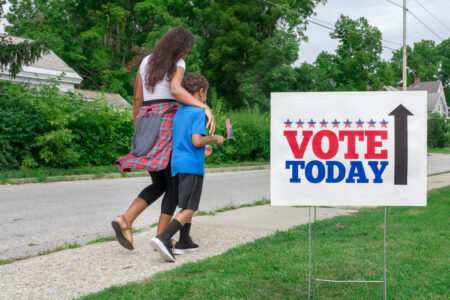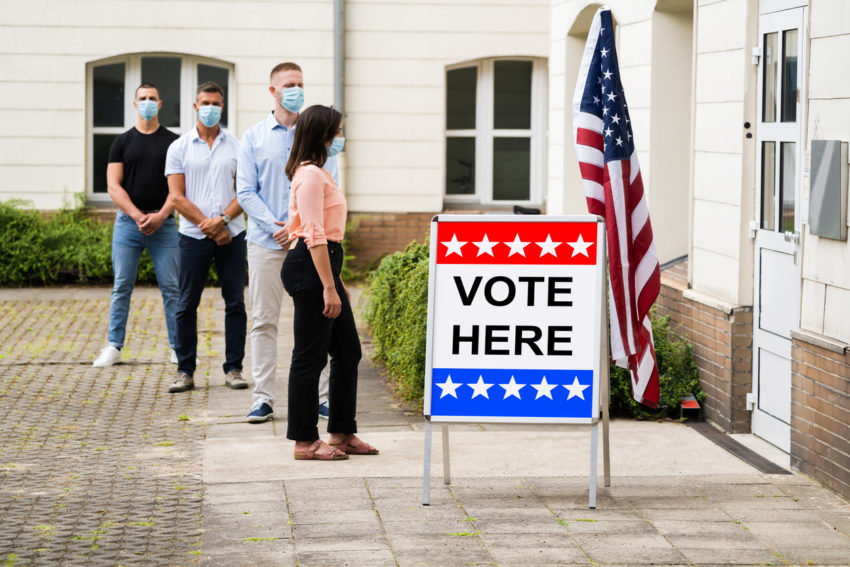
Share On Social!
Latinos will account for the largest non-white voter demographic in history, as 2 million Latinos are expected to vote during the 2020 presidential election.
Moreover, every 30 seconds, a young Latino in the United States becomes eligible to vote. This data, collected by the Pew Research Center and the U.S. Census, respectively, makes one thing clear: the Latino vote will play a key for the 2020 election outcome.
Due to the numerous disparities impacting this community, especially amid COVID-19, issues like the economy and health care—not immigration—will drive the Latino vote in 2020, according to a new report by the UCLA Latino Policy and Politics Initiative.
“Latinos will be critical in deciding the most consequential election of our lifetime,” Sonja Diaz, founding director of the UCLA Latino Policy and Politics Initiative, said in a recent statement. “Latinos form the largest non-white segment of the electorate and an outsized share of our frontline workers, so their policy preferences are clear directives to the major parties to center policies on this demographic.”
Key Findings of The UCLA Latino Policy and Politics Initiative Report
Latinos, who receive lower wages, are less likely to have health insurance. They also have a higher likelihood of contracting COVID-19 than other demographic groups.
Still, women vote at higher rates than men across all racial and ethnic groups in the US. and that gap is vast for Latino voters.
Among the issues on voters’ minds, the ones that could sway the election, include:
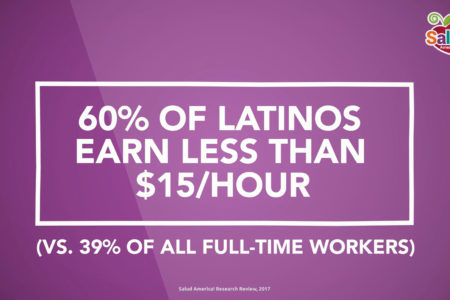 Huge wage-gap disparities are present in the American economy the majority of Latino workers earn less than $15 an hour in Arizona (53.9%), Florida (52.9%), and Texas (54.8%).
Huge wage-gap disparities are present in the American economy the majority of Latino workers earn less than $15 an hour in Arizona (53.9%), Florida (52.9%), and Texas (54.8%).- Latinos struggle with healthcare, housing, and food expenses, and Latinos receive lower pay than white workers for doing similar work. The hourly wage difference between white and Latino workers in the same job with the same education is 2% in Arizona, 4.8% in Florida, 1.6% in Nevada, and 5.3% in Texas.
- The uninsured rate remains higher among Latino (25.1%) than White adults (8.5%). Latinos are more likely to be uninsured than any other demographic group in these four states. The proportion of Latinos without health insurance is 19% in Arizona, 21% in Florida, 21% in Nevada, and 29% in Texas.
- The COVID-19 pandemic, which is disproportionately harming Latinos. In Arizona, Latinos make up 32% of the population and 45% of COVID-19 cases. In Florida, Latinos make up 26% of the community and 38% of COVID-19 cases. In Nevada, Latinos represent 29% of the population and 45% of COVID-19 cases, and in Texas, they represent 40% of the population and 45% of COVID-19 cases.
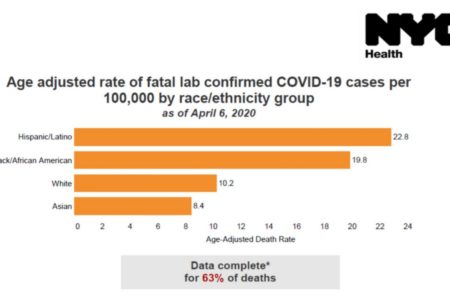 “Latino voters care about issues other than immigration reform,” Rodrigo Dominguez-Villegas, research director for the policy and politics initiative and a co-author of the report, said in a statement. “Latinos are essential workers and essential voters, yet they remain overlooked by our nation’s leaders in conversations about health care and the economy. Now more than ever, with Latinos holding power to determine this election, we must understand the serious economic and health disadvantages faced by Latinos, and we must design policies that will address these disadvantages.”
“Latino voters care about issues other than immigration reform,” Rodrigo Dominguez-Villegas, research director for the policy and politics initiative and a co-author of the report, said in a statement. “Latinos are essential workers and essential voters, yet they remain overlooked by our nation’s leaders in conversations about health care and the economy. Now more than ever, with Latinos holding power to determine this election, we must understand the serious economic and health disadvantages faced by Latinos, and we must design policies that will address these disadvantages.”
“Every vote will be critically important on November 3rd, and we (Latinos) can not sit this one out. While the pandemic has impacted all nooks and crannies of the country, it has particularly devastated people of color,” Dr. Rogelio Sáenz, current Professor in the Department of Demography at the University of Texas at San Antonio, writes in an op-ed essay for the upcoming issue of La Voz de Esperanza on the importance of voting in the forthcoming presidential election.
Efforts to Boost Latino Voter Participating
Many minority organizations across the country have spent months and years getting as many of them registered to vote as possible in the lead-up to the presidential election.
“There’s a hunger for our community to be involved and speaking up, of being face-to-face and personally involved and participating,” LULAC CEO Sindy Benavides tells NBC News. “We must vote. Our lives depend on it.”
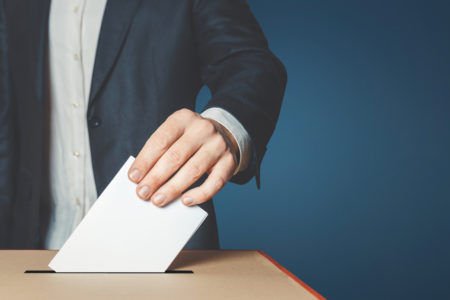
Mi Familia Vota, a national organization based in Phoenix, has announced a $10 million campaign to turn out Latino voters in several of this year’s battleground states.
Many Hispanic voting advocates say their voters can be engaged — but the clock is ticking for campaigns to do it.
According to the report from Unidos US, the number of Latinos eligible to vote this fall is about 32 million, but only half of them are registered. Once registered, the trend has been that eight out of 10 who are registered voters in a general presidential election.
“Latinos are one of the country’s fastest-growing electorates, and 80% of those registered end up voting in presidential elections,” said UnidosUS Deputy Vice President of Policy and Advocacy Clarissa Martinez de Castro said in a statement. “We are a young community, with many first-time voters and nearly a million coming of voting age every year. That is why registration and outreach are critical, and we are using all the tools at our disposal to raise our community’s voice in the voting booth.”
Explore More:
Increasing Civic EngagementBy The Numbers
50
percent
of big U.S cities have a local board of health


